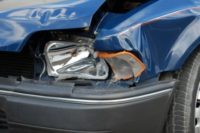If any of your employees drive a vehicle as part of their job responsibilities, they are at risk. That's why NIOSH has issued an alert, "Preventing Worker Injuries and Deaths from Traffic-Related Motor Vehicle Crashes.” The entire text is available in NIOSH Pub. No. 98-142 at http://www.cdc.gov/niosh/motralrt.html.
Prevention
NIOSH suggests:- Establishing and enforcing a written policy requiring drivers and passengers to use seat belts.
- Providing seat belts for the driver and every passenger in every company vehicle.
- Conducting driver's license background checks on prospective employee drivers before they are hired.
- Ensuring that drivers comply with designated speed limits, and prohibiting workers from driving on the job when they are fatigued.
- Making sure employees in construction and maintenance zones wear high-visibility clothing and use appropriate barriers and traffic control.
- Training drivers in safe driving practices and proper use of vehicle safety features.
- Establishing written procedures for proper maintenance of vehicles.
- Equipping vehicles with the latest safety features, such as anti-lock brakes.
Get with the program
In addition to these precautions, it’s important to provide classroom and hands-on training to your drivers. Employees may groan that they’ve been driving for 20 years and don’t need additional training, but remind them that they are more likely to die in a motor vehicle crash than from any other hazard on the job.Your training program should:
- Review the rules of the road and traffic signs.
- Discuss defensive driving techniques, including making turns and using turn signals, rules regarding the right-of-way, and how to avoid impaired or speeding drivers.
- Cover tailgating, blind spots, and passing techniques.
- Discuss speeding and the consequences of receiving a ticket. (The National Safety Council says that the driver error most responsible for motor-vehicle fatalities is speeding).
- Review substance abuse and alcohol use and their effect on driving.
- Explain how to handle bad weather conditions, such as rain, snow, or ice.
- Tell your employees what to do in case of an emergency, such as non-functioning brakes or a sudden tire blowout.
- Teach your drivers techniques to cope with "road rage."
Checking up
Once your employees have completed their training sessions and have passed written and hands-on driving tests, follow up every now and then to make sure your training has a lasting effect. At Ryder Truck, supervisors conduct monthly "check rides," where they ride along with the driver and make note of any improper driving techniques.You already know that using seat belts and good driving techniques save lives for non-job-related driving. Apply the same knowledge to the workplace. You can help save lives and reduce costs by taking some basic and effective precautions now.





.jpg?t=1721257160)
